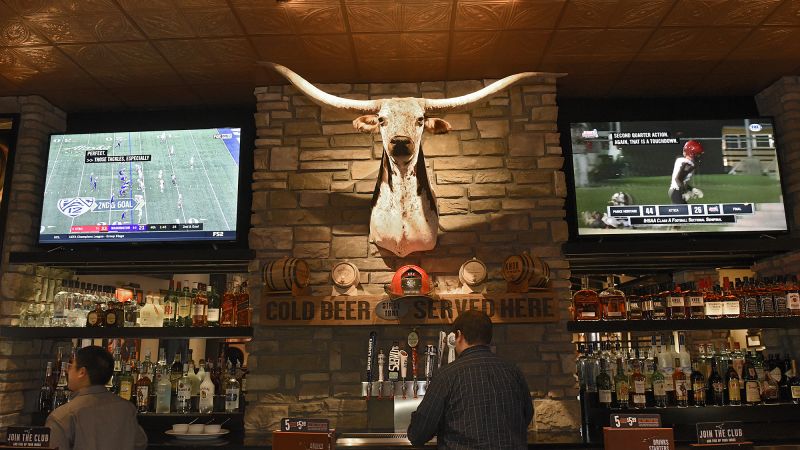
How Outback lost the steak wars
CNN
How Outback lost the steak wars to Texas Roadhouse and LongHorn
Americans don’t want Outback’s Aussie-themed steaks anymore. Instead, they’re craving Texas-style cuts from Texas Roadhouse and LongHorn’s tender filets. Texas Roadhouse and LongHorn’s sales topped Outback’s last year, and the chains’ stocks are going in different directions. Texas Roadhouse’s stock has increased around 15% over the last year, while shares of LongHorn-owner Darden jumped around 25%. Meanwhile, Outback parent company Bloomin’ Brands’ stock has tumbled more than 70% to roughly $8 a share. As inflation pressures cut into consumers’ spending, Americans are abandoning casual dining chains they don’t perceive as good value such as Outback and TGI Fridays. Instead, they are shifting to Roadhouse, LongHorn, Chili’s and other chains they feel offer them a better deal when they go out to dinner. It’s a steep fall for Outback, which defined the casual dining steakhouse model in the United States. Founded in 1988, customers jumped on Outback’s cheap, juicy sirloin steaks and deep-fried onion blossoms during the 1990s and 2000s. But Outback’s mistakes and competitors’ innovative strategies have tipped the power order in the restaurant steak wars. Outback hiked prices too high, relied too heavily on promotions to draw diners, and cut costs too far. Customers and analysts alike say food quality suffered, table service slowed and restaurants became dingy. Outback is also more expensive: The chain’s check average was $29 last year — $6 above Roadhouse and $2.50 more than LongHorn. That allowed Roadhouse to peel off Outback’s budget-conscious customers, while LongHorn won diners by increasing the size of its steaks. Both chains also increased prices at a slower pace than Outback while investing in their staffs and restaurant remodels.

 Run 3 Space | Play Space Running Game
Run 3 Space | Play Space Running Game Traffic Jam 3D | Online Racing Game
Traffic Jam 3D | Online Racing Game Duck Hunt | Play Old Classic Game
Duck Hunt | Play Old Classic Game











